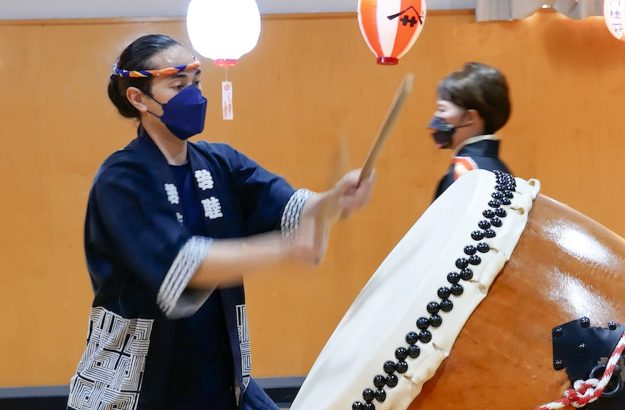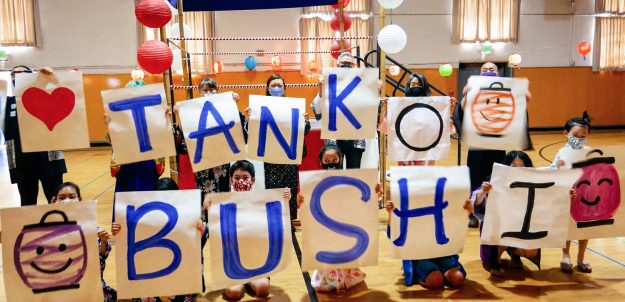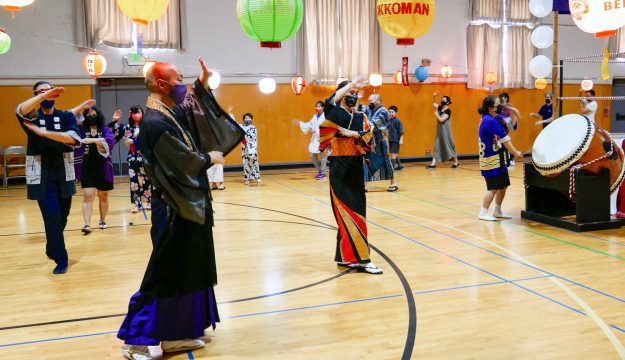Obon season, the time when we celebrate our ancestors’ return to this world, has come. It is a time of honoring one’s ancestors by returning home; offering fruit, somen noodles, and other food to ancestors’ gravesites and their home altars; performing celebratory dances; and visiting temples to attend Obon services. But what does the holiday really mean?
“Obon” is an abbreviation of “urabon,” a term that has three origin stories. The first and most widely credited theory is that urabon comes from the Sanskrit wordt ullambana or avalambana, which means “hanging upside down.” The second theory suggests the term comes from urvan, an ancient Iranian word from the Avestan language that means “spirit.” The third is that “bon” means “tray” and “ura” comes from odana or olaha, the Sanskrit words for “rice” and “food,” meaning that urabon is “a tray to serve food or rice to monks.”
Looking to the Ullambana Sutra, which tells the story that inspires Obon, I believe all three theories could be right.
The sutra tells a story of Sakyamuni Buddha, who lived in India about 2,500 years ago, and Moggallana, one of Buddha’s disciples and a chief master of supranormal power. One day Moggallana uses his supranormal power to visualize the whereabouts of his deceased mother. Searching all the realms, from the highest of the heavens to the lowest of the hells, he was surprised and horrified to find his mother suffering the torments of the realm of hungry ghosts. Jealous and greedy beings are sent to this realm, and no one can eat or drink anything because food and drink turn into fire before they are consumed. So hungry ghosts are always skinny with swollen stomachs. When Moggallana tries to give some food to his mother, it turns into fire and carbonizes. Helpless in aiding his mother, he seeks help from the Buddha.
The Buddha tells him, “Your mother was a greedy and envious person. You cannot save her by yourself. You need the combined help of all the monks to help your mother. Many monks are in summer retreat now. Bring them offerings of food and bedding.”

Following the Buddha’s instructions, Moggallana offers food and bedding to monks and his mother is freed from the realm of hungry ghosts, relieved of her suffering. Overjoyed, Moggallana claps his hands and dances. This is said to have been the beginning of bon odori, dances celebrating Obon.
I have listened to this Obon story every year. While I feel relieved that Moggallana’s mother was saved, I also have questions. Why didn’t Sakyamuni Buddha directly save his mother? Why did Sakyamuni Buddha give Moggallana such a roundabout way of saving her: making offerings to the monks? Were there any direct ways to save his mother?
Making offerings to monks is an important Buddhist deed called dana, one of the six paramitas that bodhisattvas practice to attain enlightenment. Practitioners receive virtue as a result of practicing dana. In this story of Moggallana, a son performed dana to save his mother, and he received virtue from his actions.
When I think deeply about this story, I realize that Moggallana’s mother showed her son the torments of the hungry ghost realm because she wanted her son to practice dana and receive virtue. Sakyamuni Buddha understood her thoughts and advised Moggallana to make offerings to the monks. His mother must have been a bodhisattva who led Moggallana to walk the Buddhist path even after she died. When I understand this story in this way, it is not only talking about Moggallana saving his mother, but also about Moggallana’s mother giving her son an opportunity to practice dana and accumulate virtues to attain enlightenment.
Many people understand the traditions and customs of Obon as an opportunity to make offerings to their ancestors (urvan). But this understanding of Obon is also upside-down (ullambana or avalambana). Our ancestors are actually giving us the opportunity to practice dana (odana or olaha) and observe Buddhist practice. They are guiding us to walk the Buddhist path.

